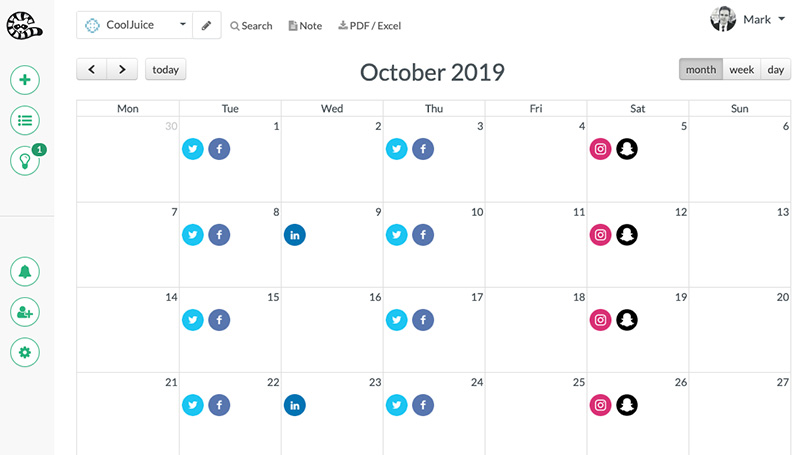A content calendar is a tool that helps businesses and marketers plan, organize, and schedule their content in advance. It provides a roadmap for creating timely, relevant, and engaging content that aligns with a brand’s voice and objectives. Content calendars can include a mix of content types, such as blog posts, social media posts, videos, and infographics, and should be designed with the target audience in mind.
In Part 1 of this article, we discussed the importance of creating a content calendar, understanding your audience, setting specific goals, conducting a content audit, and establishing themes. In Part 2, we’ll cover five more helpful tips for creating a content calendar.
6. Use Visuals to Enhance Your Content with Images and Video
Using visuals in your content can grab attention and engage your audience. When planning your content calendar, consider including visual content in your strategy.
You can create infographics, videos, and images that align with your brand message and resonate with your audience. Visual content can increase engagement and drive more traffic to your website.
7. Include Call-to-Actions to Encourage Engagement and Conversion
Including call-to-actions (CTAs) in your content can encourage engagement and conversion. CTAs are prompts that encourage your audience to take a specific action, such as “subscribe now” or “click here to learn more.”
Including CTAs in your content can guide your audience through the buyer’s journey and encourage them to take action.
8. Stay Flexible and Allow for Unplanned Content
While having a content calendar is essential, it’s also important to stay flexible and allow for unplanned content. Sometimes, unexpected events or trends present opportunities for creating timely and relevant content. By staying flexible, you can take advantage of these opportunities and create content that resonates with your audience.
When planning your content calendar, leave some room for unplanned content. You can create a list of potential topics or ideas that you can use if an opportunity arises. By staying flexible, you can ensure that your content remains relevant and timely.
9. Review and Evaluate Your Content Calendar
Analyzing the success of your content calendar is essential to improving your content strategy. By reviewing your content’s performance, you can identify areas for improvement and adjust your strategy accordingly.
When reviewing your content calendar, consider the following metrics:
- Website traffic
- Social media engagement
- Conversions
- Time on page
- Bounce rate
By analyzing these metrics, you can identify what’s working and what’s not and adjust your content strategy accordingly.
10. Leverage the Expertise of Your Team
Collaborating with other members of your team can help you create more comprehensive and effective content. By leveraging the expertise of your team, you can create content that aligns with your brand message and resonates with your audience.
When planning your content calendar, consider collaborating with others on your team. You can brainstorm ideas together, assign topics to specific team members, and review and provide feedback on each other’s content. By working together, you can create a more diverse and engaging content calendar that reflects your brand’s voice and expertise.
Conclusion
Putting together a content calendar is essential in developing a successful content marketing strategy. By following these tips, you can create a content calendar that drives results and supports your overall marketing strategy.
Create an efficient and effective social media content strategy with ContentCory. Our calendar for social media can help you plan, schedule, and publish your social media content with ease. Sign up with us today to get started.


